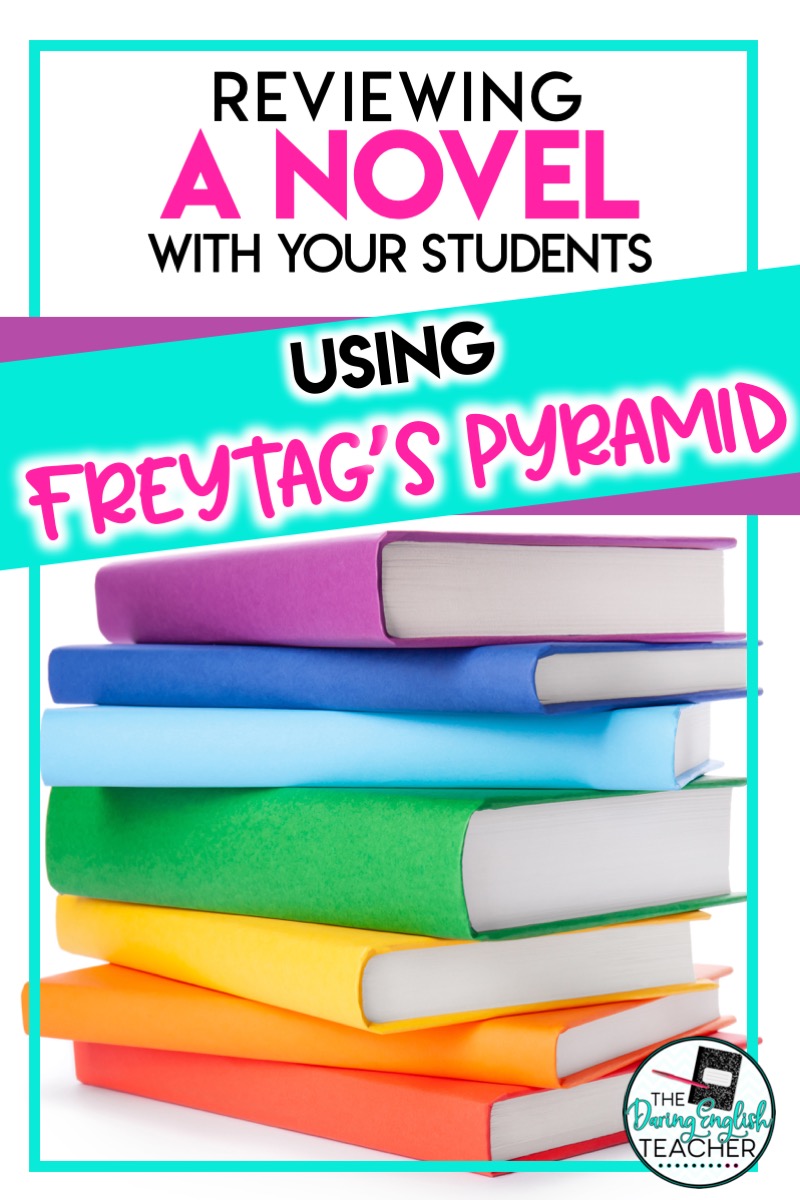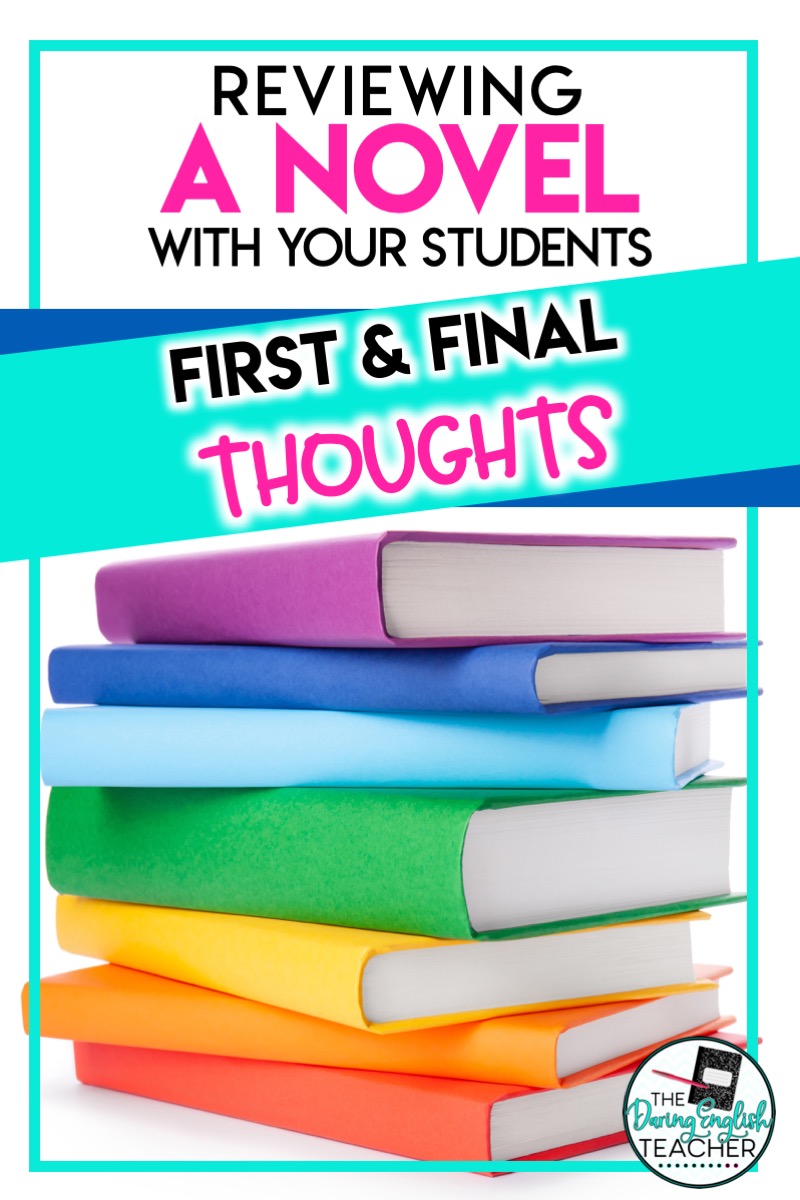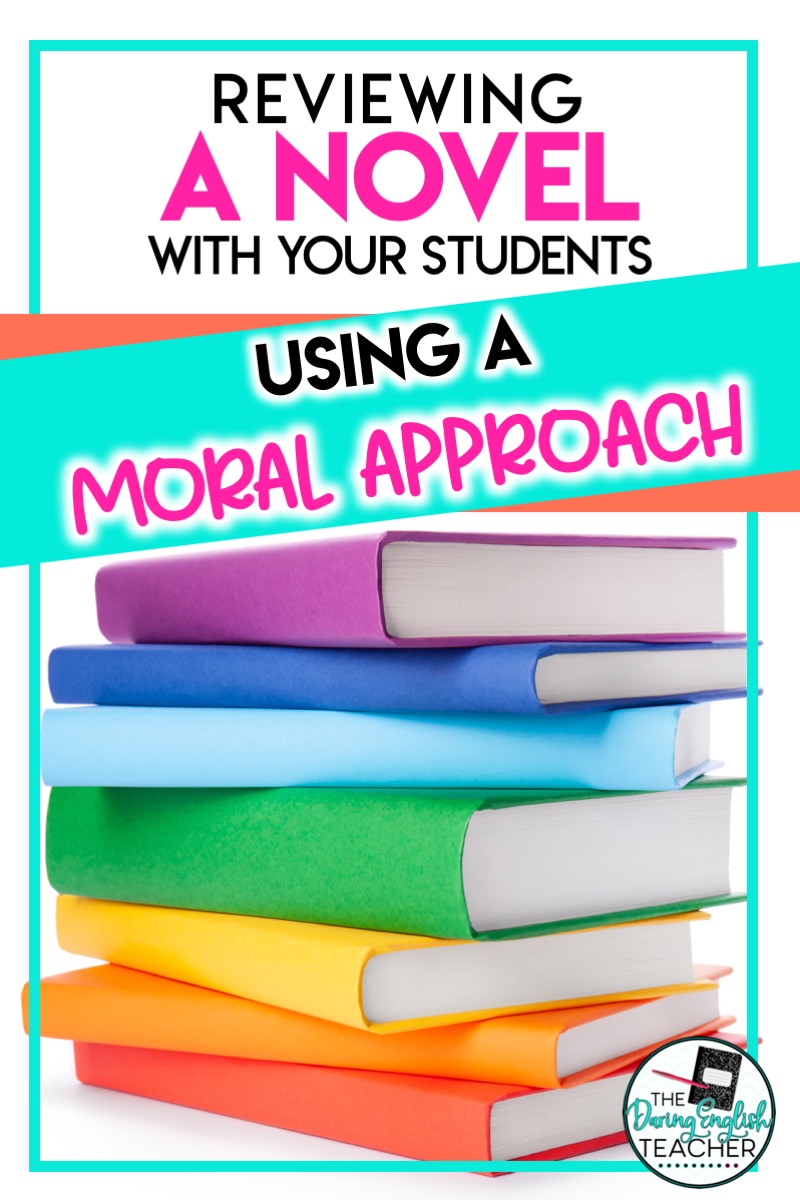Teaching and reviewing novels in the middle school ELA or high school English classroom is one of the pinnacle activities of a secondary ELA curriculum.
Once you finish a novel that you and your class have been reading together for several weeks, there’s always that brief awkward moment. What’s next?
Before jumping headfirst into a new endeavor, you must have fully covered the one still at hand: that novel you just finished. When you read a class novel, it is essential to take some time to close out the reading so that students have enough time to understand, absorb, and learn from the full text in front of them.
Here are four novel-reviewing techniques to use in your English classroom to make sure students fully understand the class novel you just read.
Reviewing a Class Novel with Freytag’s Pyramid
Story arcs, pyramids, etc. are a timeless and tireless tool to examine the overall structure or skeleton of a novel – because this is needed before students can jump right into a more complex literary analysis discussion.
To do this activity in your classroom, separate students into groups of no more than five students and have them label these sections accordingly onto a sheet of paper: exposition, rising action, climax, falling action, and denouement. Take time to explain what each of these sections signifies if students remain unaware or need reiteration. Have your students, in their groups, match each of these labels to the part of the novel they believe it coordinates with. Have the groups discuss as a class and then try to develop a “master pyramid” for the entire class. Reviewing the basic plot structure in this fashion will allow students to devote their attention to more complex ideas when the time comes.
Reviewing a Class Novel: First and Final Thoughts
When students become immersed in a novel’s storyline, it’s easy to forget where everything started. For example, who or what has changed throughout the plot. That is why it can be immensely helpful to go back and re-analyze its opening scene or chapter after discussing the closing scene of a novel.
Have students take a few moments to read the novel’s opening section for themselves and note any particular moments that now stand out to them, with their newfound information in mind.
Are students able to make new connections?
Do students notice anything of importance that they hadn’t before?
What new details stick out to students?
Ask students to share the passages they have selected with the class, and use this as material for a broader, more open discussion in which you guide students towards connecting this material with the novel’s closing sequence.
Encourage students to notice and discuss similarities between the two scenes and how these might relate to possible themes that the novel is trying to relay. You can complete this activity with any section or passage from the book once you’ve read through it.
Reviewing a Class Novel with Authentic References
Another useful and provocative way to discuss a novel is by cross-referencing it with relevant cultural relics. These can be as directly or loosely related to the novel as you’d like.
For example, find some relevant nonfiction or news articles about the book to include in your class discussion. Perhaps you can find an old article about the novel’s release, or you might look for an author interview you can read with your students.
Noting the authentic reception of the novel in this way will allow students to grasp the novel as an authentic entity – as something that average people read and reacted to, just like them.
Reviewing a Class Novel: A Moral Approach
This easy take-home or do-now exercise will encourage students to reflect on a novel both creatively and pragmatically. Pose this question to students: “If there were one lesson you learned from this novel that you were to share with your future grandchildren, what would that be?”
This approach will allow students to see the novel from a relevant standpoint. To add in some creativity to this assignment, you could also have students write from the perspective of a character. As students write, remind them to support their findings and conjectures with textual evidence consistently.
Following these suggestions will help your students review any novel they read with the utmost clarity and certainty. Hopefully, they will learn to take something away from what they have read, and develop the tools to store this information and use it to their advantage, now and in the years to come.







